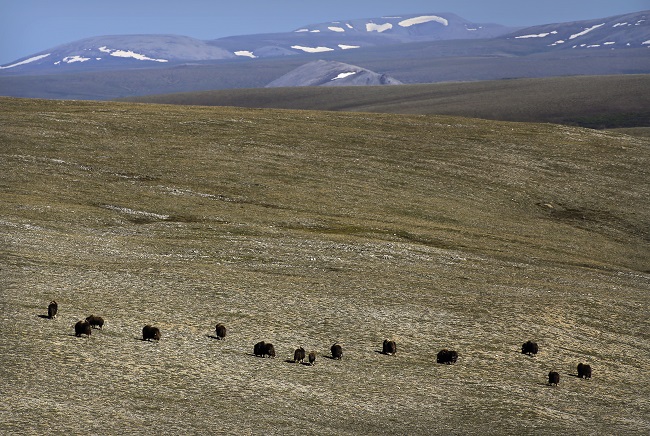Sunny near Kotzebue, with low clouds north in the monument. Minimal patches of snow – mostly none. The ice is all gone. We saw a group of muskox grazing on the tundra near a river.

NPS Photo/Emily Mesner
Their fur is uniquely adapted for the harsh Arctic winter on the unsheltered tundra. The long outer layer serves as a windbreak while the under layer of qiviut is one of the warmest and strongest fibers in the world. During the spring, muskoxen shed their layer of qiviut, which often is caught in willow branches and sedges. Traditionally, Inupiat have collected the fur to make hats, gloves and sweaters.
Muskox have been a part of the Inuqiat subsistence lifestyle for thousands of year, but by 1900, widespread hunting by whaling crews and the changing climate drove the muskox to extinction in Northern Alaska. To reestablish the local population, 36 muskox were captured in Greenland in 1930 and brought to Alaska. They were later released in northwest Alaska and on the Seward Peninsula and the population is once again on the rise.
Seen from either the air or land, muskoxen are a majestic site. It is important to remember however that they are wild animals and to take precautions to keep yourself and your animals safe.

